In the Shadows of Downtown
The author of this article, Alicia Kachmar is also, in her words, “a writer, teacher, crafter, photographer, baker, biker, and occasional pool hustler.”
Back in September, I participated in Park(ing) Day right here in Tribeca and met some of my neighbors, one of whom was Jennifer Kotter, a fellow artist with a studio just a block away from my doorstep. Many email conversations later and we were somewhat familiar with each other’s creative work. More recently, I attended the opening of Details Below 14th Street, her solo photography show at the Manhattan Borough President’s Office Gallery, in the Municipal Building. “About architecture and memory,” as the press release for the exhibit describes them, the black-and-white photographs depict up-close views of building façades and architectural features, 90 percent of which are in Tribeca. The photos, all shot with a Canon film camera, “present chance encounters with rich detail, texture, and intangible familiarity, echoing the beauty of fleeting human encounters between strangers in the city.”
As I examined each photo, I was surprised at how many I couldn’t place, even though they did look familiar. I overheard others trying to guess as well, as the locations are not specified. Afterward, walking around the neighborhood, I found myself slowing down and scrutinizing Tribeca’s buildings more; by removing the distraction of color, black-and-white photography forces you to to focus on form, shape, and light. A similar attention to detail was even paid to the presentation of the photos at the gallery, where Kotter refrained from using glass on the works that faced a large window so that no blinding glares fall between you and the photo.
I sat down with Kotter at her studio to learn more about the artist behind Details and, of course, a fellow Tribeca citizen. The oldest of six, Kotter grew up in west L.A. and attended school at California State University in Long Beach and University of California San Diego. She recalls being influenced by professor Manny Farber, apainter and film critic. It was around this time that Kotter, initially in school for clothing design and studio art, segued into photography—for her, creating a painting wasn’t a fast enough mode of creating art.
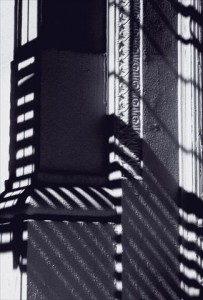
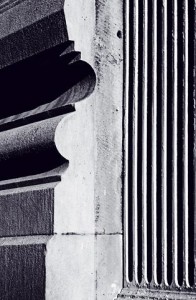
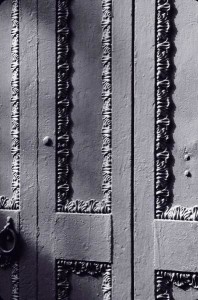 Armed with an MFA in visual arts, she moved to New York City in 1982, attracted by “the density.” She worked at The Village Voice in the 80’s and 90’s as a freelance photographer with mentoring by Fred McDarrah, the Voice photo editor known for documenting the Beat Generation in the 50’s. Not only a job, the Village Voice “gave me my community,” says Kotter. In addition to some secretarial stints in corporate environments, she was also the resident photographer at the Frick Collection in 1986. A jane-of-all-trades still, she presently teaches Photoshop one-on-one and works as a freelance graphic designer.
Armed with an MFA in visual arts, she moved to New York City in 1982, attracted by “the density.” She worked at The Village Voice in the 80’s and 90’s as a freelance photographer with mentoring by Fred McDarrah, the Voice photo editor known for documenting the Beat Generation in the 50’s. Not only a job, the Village Voice “gave me my community,” says Kotter. In addition to some secretarial stints in corporate environments, she was also the resident photographer at the Frick Collection in 1986. A jane-of-all-trades still, she presently teaches Photoshop one-on-one and works as a freelance graphic designer.
Kotter has been in the neighborhood for 19 years and has therefore seen a lot of changes, architecturally and otherwise. “I took my first tour with artist Martha Wilson in 1977 when it was just deserted warehouses and loading docks and dark empty scary streets,” she says. She was captivated immediately by what she saw and was committed to live here after a lot of apartment hopping.
Following the same course as many other neighborhoods that embraced and supported artists and their accompanying budgets, Tribeca became a destination for the affluent, and much-loved mainstays succumbed to rent hikes. Kotter reminisces about the Franklin Station Café, where she became good friends with the owners. She describes the restaurant as her “living room” and a “marvelous gathering place” that she has yet to find replicated. Hearing her talk about a Tribeca that is mostly unknown to me, I couldn’t help but think about the shadows in Details—so beautiful and yet so fleeting. How quickly both small details and entire neighborhoods in this city can change.
Although a lot of old buildings still remain in Tribeca, the façade details mostly in tact, their usages are probably different. Kotter researches each building after she shoots it, using city indexes to piece together the history of each, with the hope that she will someday publish the photos and their accompanying histories as a book. As of right now, the photos are available in a limited run of 20 small, beautifully crafted books (with a map in the back) made by one of Kotter’s assistants, Meghan Fulkerson, who attended Pratt for printmaking. If you’re interested in one, let her know.
Details Below 14th Street runs until Feburary 26 at the Municipal Building (1 Centre St., at Chambers). The gallery is on the 19th floor and is open Monday-Friday, 9am-5pm. For more details about the show, head on over to Jennifer Kotter’s website. Kotter will also be part of TOAST, the Tribeca Open Artist Studio Tour, this April and you can view her permanent “MTA Jewels,” a series of commissioned photographs, in the Sixth Avenue L subway station.








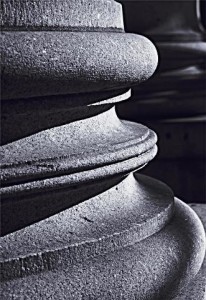
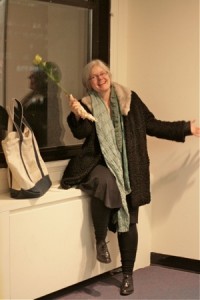
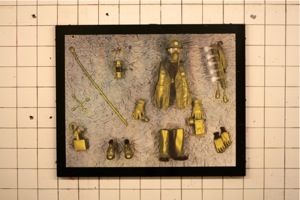











thank you Alicia!!
Nice reivew!